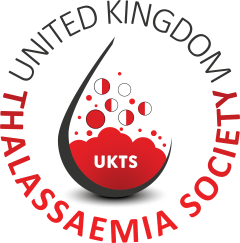How is thalassaemia treated?

Information
People can have different blood types, known as blood groups. There are four main blood groups – A, B, AB and O
Each group can then be either RhD positive or negative, so your blood group can be one of eight types.The genes you inherit from your mother and father determine your blood group.
WHAT IS BLOOD?
Your body carries around four to six litres (8.5 to 12.5 pints) of blood. Blood is made up of red blood cells, white blood cells and platelets in a liquid called plasma.
Plasma is made up of about 90% water but also contains proteins, nutrients, hormones and waste products. Blood is made up of about 60% plasma and 40% blood cells.
Each of the three types of blood cells has specific roles to play:
- Red blood cells transport oxygen around the body and remove carbon dioxide and other waste products. They give your blood its red colour.
- White blood cells fight infection as part of the immune system (the body’s natural defence against infection and illness).
- Platelets help the blood to clot (thicken).
Blood groups
Your blood group is identified by the antigens and antibodies that are present in the blood. Antigens and antibodies are your blood’s natural defence against foreign substances.
Antigens are protein molecules that are found on the surface of red blood cells and antibodies are found in the plasma. They recognise anything unusual in your body and alert your immune system so that it can destroy it.
THE ABO SYSTEM
Blood groups are defined by the ABO system.
- Blood group A has A antigens on its red blood cells and anti-B antibodies in its plasma.
- Blood group B has B antigens and anti-A antibodies in its plasma.
- Blood group O has no antigens but both anti-A and anti-B antibodies. This means that group O red cells can safely be given to anyone. It is the most common blood group in the UK.
- Group AB has both A and B antigens but no antibodies, otherwise it would destroy itself.
Receiving blood from the wrong ABO group could be life-threatening because antibodies in a person with group A blood will attack group B antigens and vice-versa.
THE RH SYSTEM
Red blood cells sometimes have another antigen, a protein known as the RhD antigen. If this is present, your blood group is RhD positive. If it is absent, you are RhD negative. This means that you can be one of eight blood groups:
- A RhD positive (A+)
- A RhD negative (A-)
- B RhD positive (B+)
- B RhD negative (B-)
- O RhD positive (O+)
- O RhD negative (O-)
- AB RhD positive (AB+)
- AB RhD negative (AB-)
Around 85% of the UK population is RhD positive.
BLOOD GROUP TEST
To work out your blood group, your red cells are mixed with different antibody solutions. If the solution contains anti-B antibodies and you have B antigens on your cells, it will clump together. If the blood does not react to any of the antibodies, it is blood group O. A series of tests with different types of antibody will identify your blood group.
If you have a blood transfusion, your blood will be tested against a panel of donor cells that contain all of the clinically significant antigens. If there is no reaction, donor blood with the same ABO and Rh type can be used.
PREGNANCY
Pregnant women always have a blood group test. If the mother is RhD negative but the child has inherited RhD positive blood from the father, it could cause complications if left untreated.
This information is from the NHS Choices website also visit the National Blood Service
THE FUTURE
Stem Cells for blood transfusion.
